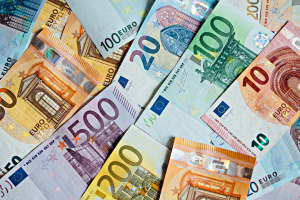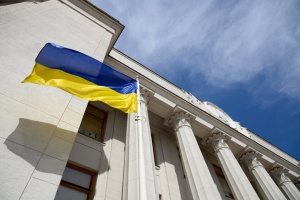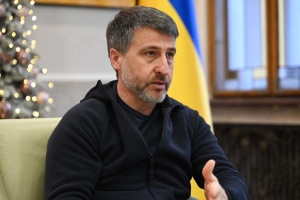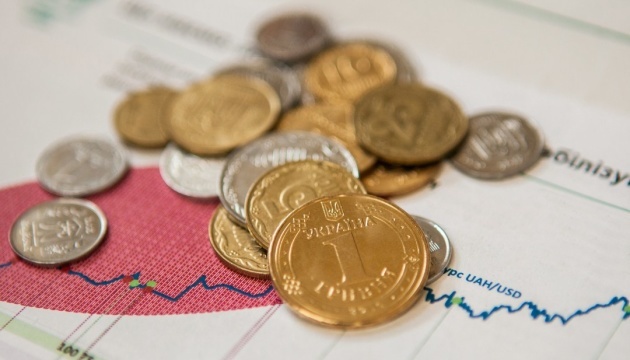
Things that contribute to Ukraine’s economic resilience during the war of Independence
Despite predictions that our economy would not survive even a few months of a large-scale war, Ukrainians have been fighting the enemy at the front-line for more than eighteen months now, while at the same time supporting a relatively stable life in the hinterland. Last year, the country’s GDP fell by a third, inflation reached its “twenties”, logistics chains were severed, and real incomes fell. Nevertheless, Ukraine is celebrating its 32nd birthday amid increased business activity and slower inflation, while rebuilding the destroyed infrastructure and making plans for the future. Domestic experts and international organizations meanwhile are consistently improving their economic growth forecasts. The war obviously continues to pose challenges, but the country has learned to live in these conditions. What exactly has contributed to our economic and financial adaptation?
AN UNPRECEDENTED LEVEL OF INTERNATIONAL FINANCIAL SUPPORT AND LOAN RESOURCES
It is a well-known fact that, during the war, Ukraine has been channeling the lion’s share of its state budget expenditures (more than UAH 5 billion a day!) into defense and security. Meanwhile, international partners help with money for social spending, public sector salaries, and some other needs of the state. Given this, reproaches like “Can anyone really talk about financial independence under such circumstances?” may seem quite justified. At the same time, we need to realize that national economies capable of “pulling off” their expenditures in the face of such an intense war can be counted on one hand. World history has numerous examples of the enemy defeated only through the consolidation of international efforts, including in the financial sector.
Besides, Ukraine’s partners do not condition their assistance on any potential material claims. They regard current spending as investments in their own security and in the future of global civilization. Furthermore, even if any requirements are put forward to our country in the course of utilizing grant and loan funds, they only concern reforms in which we ourselves are interested. Sooner or later, Ukraine would have to start their implementation anyway. The war merely accelerated this process.
According to the Ministry of Finance, partners have provided Ukraine with $60.17 billion in non-repayable aid and loans since the full-scale Russian invasion began. In particular, $28.07 billion was received from the international community this year. The largest amount — $11.4 billion — was provided by the European Union. We received $8.5 billion from the United States and $3.59 billion from the IMF. Next on the list are Canada ($1.76 billion) and Japan ($1.5 billion). The World Bank contributed $579 million, and the United Kingdom provided $499 million. Spain, Germany, Finland, Ireland, Switzerland, Belgium, Iceland, and Estonia also provided financial support to our country this year.
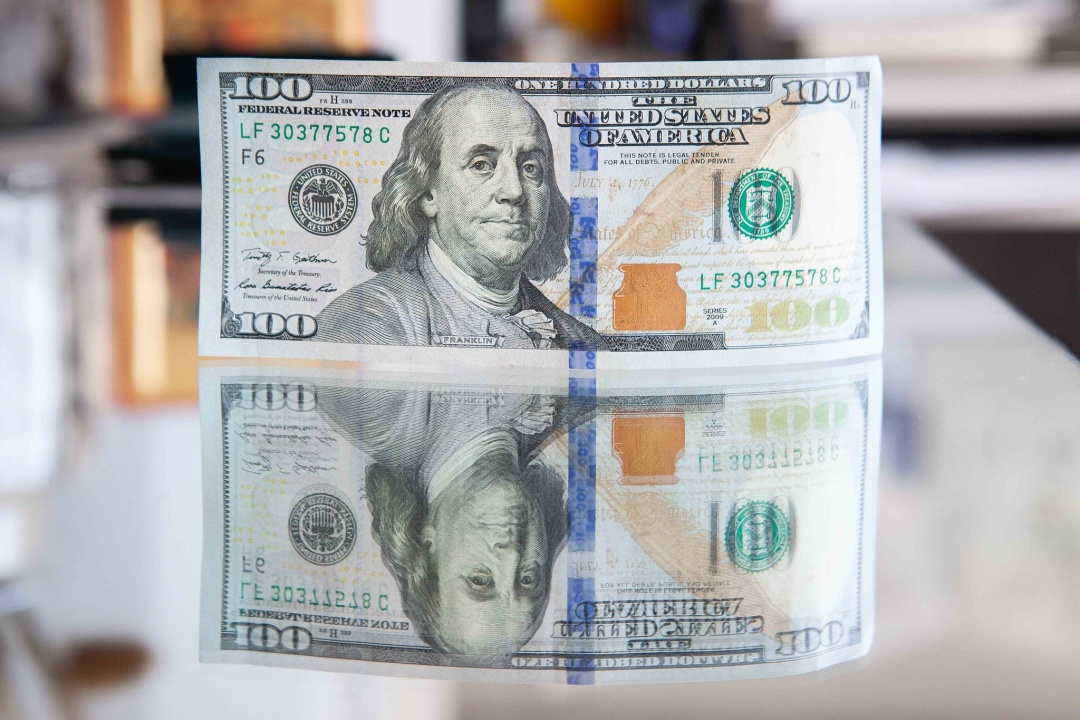
Earlier this year, the Ministry of Finance estimated that Ukraine’s needs for additional financing from international partners this year would amount to at least $38 billion.
The lion’s share of the financial resources is provided by Ukraine’s partners on a non-refundable basis. However, there is also a portion of funds that we receive as loans, for example, within the scope of cooperation with the IMF. The country must also resort to active borrowing on the foreign and domestic commercial borrowing markets, mostly by placing military bonds.
“In 2023, central government borrowings are planned to finance the State Budget of Ukraine using a wide range of debt instruments totaling UAH 1,703.6 billion. Long-term instruments are projected to take up the largest share at 57%,” states the Ministry of Finance in its order.
At first glance, the intensified government borrowing is not about financial independence either. After all, the funds raised through the sale of Ukrainian securities will have to be repaid to investors at some point. And with interest at that. However, there’s hardly anyone who would argue that such instruments of raising financial resources are indispensable in times of war. Otherwise, the state would be unable to cover its basic expenditures, primarily defense and social ones. Moreover, almost no country in the world can do without such borrowing even in peacetime. Some countries owe creditors a few times more than their annual GDP.
The only differences between borrowing in peacetime and wartime are the growing financial needs and the cost of borrowing. After February 24, Ukraine temporarily lost access to international financial markets. As a result, their resources have become very expensive for us, because the cost of loans incorporates enormous military risks. Under these circumstances, the government decided to rely on domestic borrowing (including borrowing that is attractive to international investors) by launching auctions for the placement of military domestic government bonds. According to the NBU depository, in the first seven months of 2023, the Government of Ukraine raised UAH 227.4 billion, $2.19 billion, and EUR 640.9 million from auctioning DGBs. UAH 141.64 billion, USD 2.08 billion, and EUR 529.8 million were allocated for repayment on domestic government debt securities during this period. Between January and July, the Ministry of Finance’s borrowings on the domestic debt market exceeded repayments on domestic government bonds by the equivalent UAH 94.3 billion. In July, the maximum yield on the auctioned DGBs was 19.75% p.a. in UAH and 4.8% p.a. in USD. No EUR-denominated DGBs were placed last month.
Most auctions for the placement of Ukrainian securities were successful, and the instruments offered by the Ministry of Finance are quite popular with both domestic (primarily banks) and foreign investors. The level of confidence in DGBs is quite high, as buyers see that, despite the war, Ukraine is fulfilling its obligations to the holders of its securities. Another important factor is the rather high yield on bonds. This is the “toll” that we regretfully have to pay because of the Russian aggression and associated military risks.
It has been reported that, in the last year’s summer and early fall, the Ministry of Finance refused to significantly raise rates on UAH-denominated DGBs, which even led to public disputes between the top managers of this financial institution and the National Bank that insisted on raising yields to a level comparable to the yield on the NBU’s own certificates of deposit. The position of the Ministry of Finance is clear here: not only must we think about how to urgently patch up budget holes now, but also about how to live and rebuild the country after the war. Doing this with a “debt noose” around our necks would be very hard. And the higher the income received by the government’s creditors, the more expensive it will be for us to repay the bonds. But life — first of all, several not entirely successful auctions of low-yield DGBs — eventually forced the financial institution to slowly raise the cost of borrowing. Now, following the NBU’s decision to move to a period of lower discount rates, the reverse process is in motion, which is certainly essential for making lower subsequent payments on Ukrainian securities.
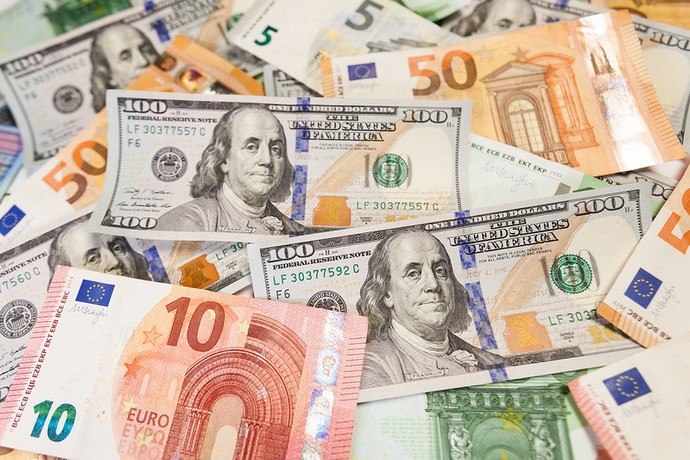
STABILITY OF THE BANKING SYSTEM AND “CALM” IN THE FOREIGN EXCHANGE MARKET
We owe the stability of this country’s financial system not least to the balanced policy of the National Bank. Importantly, the regulator backed off from issuing money this year. In other words, it did not print hryvnias that were not backed by anything, which has already had a positive impact on inflation and the strengthening of the national currency (until recently). Last year, the NBU had to print UAH400 billion to finance the central budget by purchasing the Ministry of Finance’s securities — domestic government bonds — thereby adding a few percentage points to the annual inflation rate (which had reached 26.6% by the end of the year) and putting a lot of pressure on the exchange rate, requiring the NBU to intervene more and more in the interbank market.
This year, the NBU expects inflation to not exceed 11%. Meanwhile, in the experts’ opinion, the hryvnia exchange rate, despite the current turbulence provoked, among other things, by the latest problems with agricultural exports, is unlikely to drop below 39–39.5 hryvnias per dollar. Of course, the relatively stable situation here is also largely due to the rhythmic influx of financial assistance from foreign partners and the steady build-up of international reserves. By the end of July, they exceeded the equivalent of $41.7 billion, breaking the record figure for the second time in a row since independence.
While intensifying measures to strengthen monetary transmission and support the domestic debt market, including raising mandatory reserve requirements for banks (which allowed the NBU to tie up several tens of billions of hryvnias of excess bank resources, taking off their pressure on the foreign exchange and consumer markets), the regulator simultaneously continued its policy of easing currency restrictions. Some experts even discussed the prospects for the NBU’s decision to gradually return to a free exchange rate. However, the aforementioned problems that have been putting pressure on the hryvnia in recent weeks will likely postpone such a move until better times.
Instead, the regulator’s recent policy of reducing the discount rate (in July, it was cut from 25% to 22%) is likely to continue. Another decrease may happen as early as September. Among other things, this will reduce the cost of domestic borrowing for the Ministry of Finance and at least slightly revive lending to the real economy.
Still, bank lending to businesses remains one of the weakest links in the domestic financial system, hindering more rapid economic development. And it’s not just the war, increased security risks, lack of insurance, or high real interest rates. Given the current levels of yields on DGBs and the NBU’s certificates of deposit, the banks do not care much about lending (other than participation in government programs to compensate for interest rates on business loans). In other words, this year’s increase in the domestic banking system’s earnings is due not to successful investments in promising projects or lending to the real economy, as it should be, but rather to passive income from the purchase (mostly using the refinancing funds from the NBU) of the NBU’s certificates of deposits or military bonds. Given the need to maintain the state’s financial solvency in extremely difficult times and to “tie up” excess liquidity, this is definitely a good thing. But prospects are not so rosy from a future development viewpoint.
The expected permanent decrease in the refinancing rate, followed by the yields on DGBs and the NBU’s certificates of deposit, might revive lending. But to a greater extent this will obviously depend on the situation at the front-line and on the actual mitigation of security risks.
In experts’ opinion, both the regulator and the domestic banking system have generally gotten used to operating in wartime conditions. The removal of several banks from the market over the past eighteen months has not destabilized the situation either. Those owned by the aggressor state were the first to go, followed by those that faced liquidity problems or were involved in miscoding schemes in the gambling business. The recent nationalization of the large Russian-owned bank Sense went almost unnoticed by the public.
The regulator is currently conducting stress testing of 20 banks that are leaders in terms of risk-weighted assets, deposits, and retail loans. The total net assets of these banks exceed 90% of our entire banking system’s assets. The results of this year’s assessment of the resilience of banks and of the entire banking system are expected to be published by March 31, 2024.
The NBU emphasizes that the purpose of this year’s stress test is not to “punish the culprits” but to identify problems and risks promptly and help banks overcome them. In other words, the assessment will not result in another massive bank failure.

RECOVERY OF BUSINESS ACTIVITY AND GOVERNMENT INCENTIVES
This year, Ukraine returned to real gross domestic product growth. Obviously, this pace is yet insufficient to bring about a rapid recovery of the economy to pre-war levels. Not to mention the indicators that we must reach after the war to start catching up with our European neighbors. And this is quite understandable: huge areas temporarily occupied by the enemy are excluded from economic circulation, logistics and production chains have not been restored everywhere, while obstacles to exports remain and are even increasing.
Nevertheless, the country’s GDP in Q2 increased by more than 20% against the last year’s Q2. However, according to experts, this significant growth is primarily due to the low comparison baseline, as the economy was just beginning to adapt itself to wartime conditions in April-June the year before, following the uncertainty of late February and March. Therefore, growth expectations for the year are much more modest. According to the NBU’s forecasts, the growth will be 2.9%, whereas, according to the Ministry of Economy’s recently updated estimates, it will amount to 3.2%. A more rapid development is hampered, among other things, by the decline in metallurgy and iron ore production, which is associated with the blowing up of the Kakhovka HPP dam by the Russians, and new challenges facing maritime exports after Russia’s withdrawal from the grain deal. The latter is, without exaggeration, a rather painful blow to our economy, as it not only deprives Ukrainian farmers of a significant part of their resources, but also affects the trade balance and puts pressure on the foreign exchange market. As estimated by the Ukrainian Grain Association, during the last marketing season (between July 1, 2022, and June 30, 2023), this country exported 58 million tons of agricultural products — 32.8 million tons directly through the grain corridor — the lion’s share of which was grains and oilseeds. Ukraine’s revenue from exports of grains, oilseeds, and oils reached $20 billion.
In fact, the rather modest projections of this year’s economic growth may be explained by the ensuing uncertainty. Meanwhile, supported by its partners, Ukraine is trying to restore the grain corridor and boost the capacity of alternative logistics routes by primarily using small Danube ports. However, as is known, the aggressor has intensified missile attacks on port infrastructure, both sea and river, in recent weeks.
Among the tasks brought in the forefront by the war is replacing a portion of raw material exports with sales abroad and supplies to the domestic market of processed products with high added value. “Processing must become a new economic ideology, because we should be a country that exports finished products rather than raw materials, which are more expensive,” said Yuliia Svyrydenko, First Deputy Prime Minister and Minister of Economy, during the United News telethon. According to her, the mission of the state is to help increase the capacity of Ukrainian entrepreneurs, including in terms of access to finance, and to look for new markets.
It is exactly Ukraine’s financial support instruments for business, introduced in the first weeks of the war, along with the scaling up of previously initiated programs, that is viewed by experts as another important factor in maintaining economic stability. For example, since the launch of the “5–7–9% Affordable Loans” State Program (February 2020), businesses were granted 70,000 loans worth UAH 225.4 billion. This year, entrepreneurs have already received 17,200 loans worth UAH 58.3 billion.
A grant program to support micro-entrepreneurs is also gaining momentum, with applications accepted via Diia. Potential businessmen can receive grants of up to $6,500 to start their own business. According to Yuliia Svyrydenko, the government expects to process at least 10,000 applications for such grants by the end of the year. 6 thousand applications have already been approved. A number of sectoral programs are also available for businesses, including agriculture, where businesses are helped with funds to develop horticulture, greenhouse farming, land reclamation systems, etc.
The government’s program of relocating businesses to safer regions was also extremely helpful in restoring business activity, preserving production and workforce, and creating new jobs, especially in the first months of military uncertainty. More than 800 enterprises have been relocated to the country’s west under this program. Furthermore, some production facilities, including those involved in defense, have been temporarily relocated to the territory of our European partners. According to the Ministry of Economy, the reverse process is already happening: some businesses are returning to their previous locations as the security situation improves there.
And, of course, when speaking of the factors that contribute to Ukraine’s (relative) economic stability in the midst of war, the ongoing digitization processes in the country should be mentioned. The highly evolved digital services, among other things, enabled trouble-free functioning of our banking and financial systems, while thousands of businesses have maintained their performance indicators and retained their staff thanks to online operation. New services appear in Diia almost every week. Those launched during the war include eEnemy, registration of damaged property, eHouse, eWork, and many others. Despite the war, Ukraine is implementing projects to develop broadband Internet, build ASCs, implement paperless offices, expand access to basic e-services and digital education, boost institutional capacity of oblast state administrations and local authorities.
Naturally, the impact of other industries and programs on the economy should not be underestimated. No wonder everyone recognizes the fact Ukraine would not have been able to achieve success on the front-line against such a powerful and unscrupulous enemy if it had not been able to support a reliable hinterland. And, most importantly, we believe that Ukraine will celebrate its 33rd birthday in peace, having defeated the enemy and concerned only with the issues of reconstruction and internal reform.
Vladyslav Obukh, Kyiv


